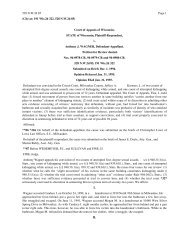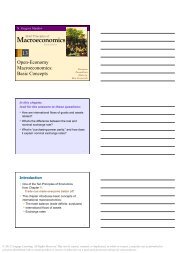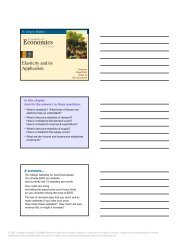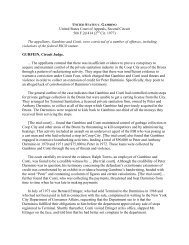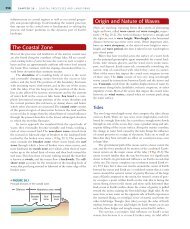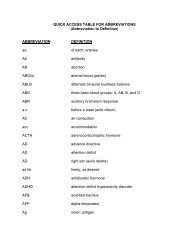Simulink Tutorial on Digital Modulation Methods - Cengage Learning
Simulink Tutorial on Digital Modulation Methods - Cengage Learning
Simulink Tutorial on Digital Modulation Methods - Cengage Learning
You also want an ePaper? Increase the reach of your titles
YUMPU automatically turns print PDFs into web optimized ePapers that Google loves.
13.5. BINARY PHASE-SHIFT KEYING (BPSK) 601<br />
TUTORIAL PROBLEM<br />
Figure 13.37: Source signal a(t)<br />
Figure 13.38: Baseband signal s(t)<br />
Figure 13.39: Transmitted signal u(t)<br />
Problem 13.12 [BPSK with Raised-Cosine Pulses]<br />
1. Are the zero ISI c<strong>on</strong>diti<strong>on</strong> and the maximum horiz<strong>on</strong>tal eye-opening c<strong>on</strong>diti<strong>on</strong><br />
met at the transmitter and receiver?<br />
2. What does the answer to questi<strong>on</strong> 1 mean for the detecti<strong>on</strong>? C<strong>on</strong>sider the eye<br />
pattern at the receiver. Does it make sense to use a raised-cosine filter at the<br />
transmitter and a matched filter at the receiver?<br />
3. Why is the signal-space trajectory not limited to the range between +1 and −1?<br />
4. How does the transmitted signal u(t) change compared to NRZ rectangular<br />
pulses? What is the effect of bandlimitati<strong>on</strong> <strong>on</strong> the transmitted signal?<br />
5. Compare the source signal a(t) and the sink signal v(t). Are there errors? (Take<br />
the filter delays into c<strong>on</strong>siderati<strong>on</strong>!)<br />
© 2013 <strong>Cengage</strong> <strong>Learning</strong>. All Rights Reserved. May not be scanned, copied or duplicated, or posted to a publicly accessible website, in whole or in part.



